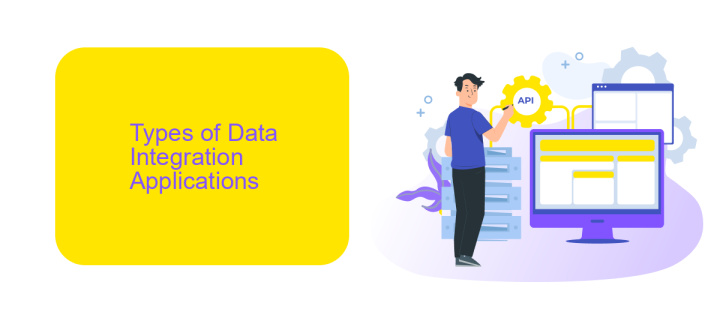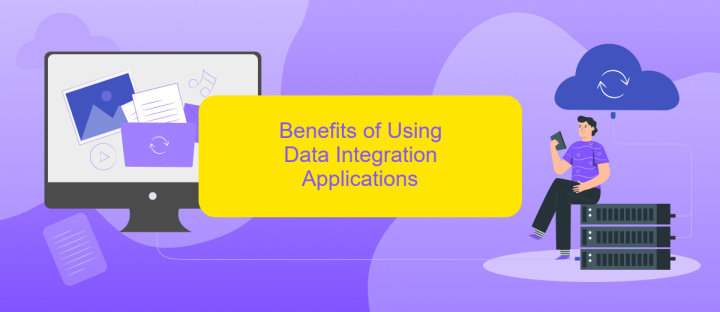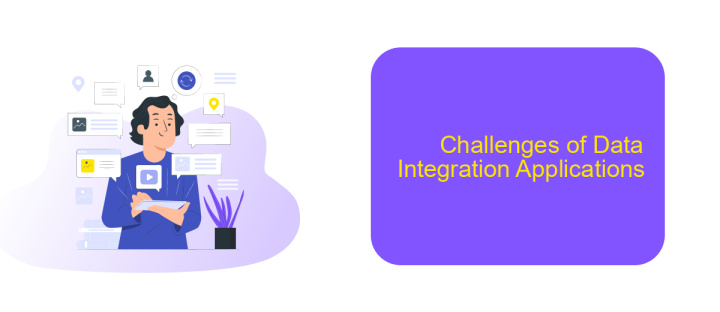Data Integration Applications
Data integration applications are essential tools for modern businesses, enabling seamless merging of information from various sources into a unified view. These applications enhance decision-making, improve operational efficiency, and provide a comprehensive understanding of organizational data. In this article, we explore the key features, benefits, and best practices for implementing data integration solutions in today's data-driven world.
What Are Data Integration Applications?
Data integration applications are tools designed to combine data from different sources into a unified view, enabling more efficient data management and analysis. These applications are essential for businesses looking to streamline their operations, improve decision-making, and enhance overall productivity.
- Centralized data management
- Improved data quality
- Enhanced data accessibility
- Streamlined business processes
- Scalable and flexible integration solutions
One notable service in this domain is ApiX-Drive, which simplifies the process of setting up data integrations. With ApiX-Drive, businesses can easily connect various applications and automate data workflows without the need for complex coding. This ensures that data flows seamlessly between different systems, allowing organizations to focus on their core activities while maintaining data integrity and consistency.
Types of Data Integration Applications

Data integration applications can be broadly categorized into several types based on their functionality and use cases. ETL (Extract, Transform, Load) tools are one of the most common types, designed to extract data from various sources, transform it into a suitable format, and load it into a target system. These tools are essential for data warehousing and analytics. Another type is data replication tools, which focus on copying and synchronizing data between different databases and systems in real-time, ensuring data consistency and availability across platforms.
API-based integration platforms, such as ApiX-Drive, offer a versatile solution for connecting various applications and automating workflows without the need for extensive coding. These platforms provide pre-built connectors and user-friendly interfaces to streamline the integration process, making it accessible to non-technical users. Additionally, data virtualization tools enable real-time data access and integration without the need to move data physically, offering a flexible and efficient approach to data management. Each type of data integration application serves a unique purpose, catering to diverse business needs and technical requirements.
Benefits of Using Data Integration Applications

Data integration applications offer a multitude of benefits for businesses looking to streamline their operations and enhance data accuracy. By consolidating data from various sources into a single, unified view, organizations can make more informed decisions and improve overall efficiency.
- Improved Data Quality: Integration applications help eliminate data redundancies and inconsistencies, ensuring that the information is accurate and up-to-date.
- Enhanced Productivity: By automating data workflows, these applications reduce manual data entry and the risk of human error, allowing employees to focus on more strategic tasks.
- Real-Time Insights: With integrated data, businesses can access real-time analytics and insights, enabling quicker and more effective decision-making.
- Cost Efficiency: Reducing the need for multiple data management systems can lead to significant cost savings in terms of both software and human resources.
- Scalability: Integration solutions like ApiX-Drive allow businesses to easily scale their data operations as they grow, without the need for extensive reconfiguration.
Overall, data integration applications are essential for modern businesses aiming to optimize their data management processes. Tools like ApiX-Drive further simplify the integration process, offering a user-friendly platform to connect various data sources seamlessly. This not only enhances operational efficiency but also provides a competitive edge in today's data-driven market.
Challenges of Data Integration Applications

Data integration applications face numerous challenges that can complicate the process of merging data from disparate sources. One of the primary issues is the diversity of data formats and structures, making it difficult to achieve seamless integration. This heterogeneity often requires extensive data transformation and mapping efforts.
Another significant challenge is ensuring data quality and consistency. Inconsistent or inaccurate data can lead to erroneous insights and decisions. Maintaining data integrity during the integration process is crucial, but it can be labor-intensive and error-prone.
- Data format and structure diversity
- Ensuring data quality and consistency
- Handling large volumes of data
- Real-time data processing
- Scalability and performance issues
Tools like ApiX-Drive can simplify some of these challenges by offering automated data integration solutions. ApiX-Drive supports various data sources and provides robust data transformation capabilities, ensuring that data is accurately and efficiently integrated. Additionally, it helps in maintaining data quality and consistency, making the integration process more manageable and reliable.


Future of Data Integration Applications
The future of data integration applications is poised to be driven by advancements in artificial intelligence and machine learning. These technologies will enable more intelligent and automated data processing, reducing the need for manual intervention and increasing efficiency. As businesses continue to generate massive amounts of data, the demand for real-time data integration will grow, necessitating robust and scalable solutions. Additionally, the rise of cloud computing will further facilitate seamless data integration across diverse platforms and devices, ensuring that data is accessible and actionable from anywhere in the world.
Moreover, user-friendly integration platforms like ApiX-Drive will play a crucial role in democratizing data integration. By providing intuitive interfaces and pre-built connectors, such services will allow even non-technical users to set up complex integrations with ease. This will empower organizations to leverage their data more effectively, driving better decision-making and fostering innovation. As data privacy and security concerns continue to escalate, future data integration applications will also prioritize robust security measures to protect sensitive information, ensuring compliance with evolving regulations.
FAQ
What is Data Integration?
Why is Data Integration important for businesses?
What are the common challenges in Data Integration?
How can automation help in Data Integration?
What should I consider when choosing a Data Integration tool?
Do you want to achieve your goals in business, career and life faster and better? Do it with ApiX-Drive – a tool that will remove a significant part of the routine from workflows and free up additional time to achieve your goals. Test the capabilities of Apix-Drive for free – see for yourself the effectiveness of the tool.

